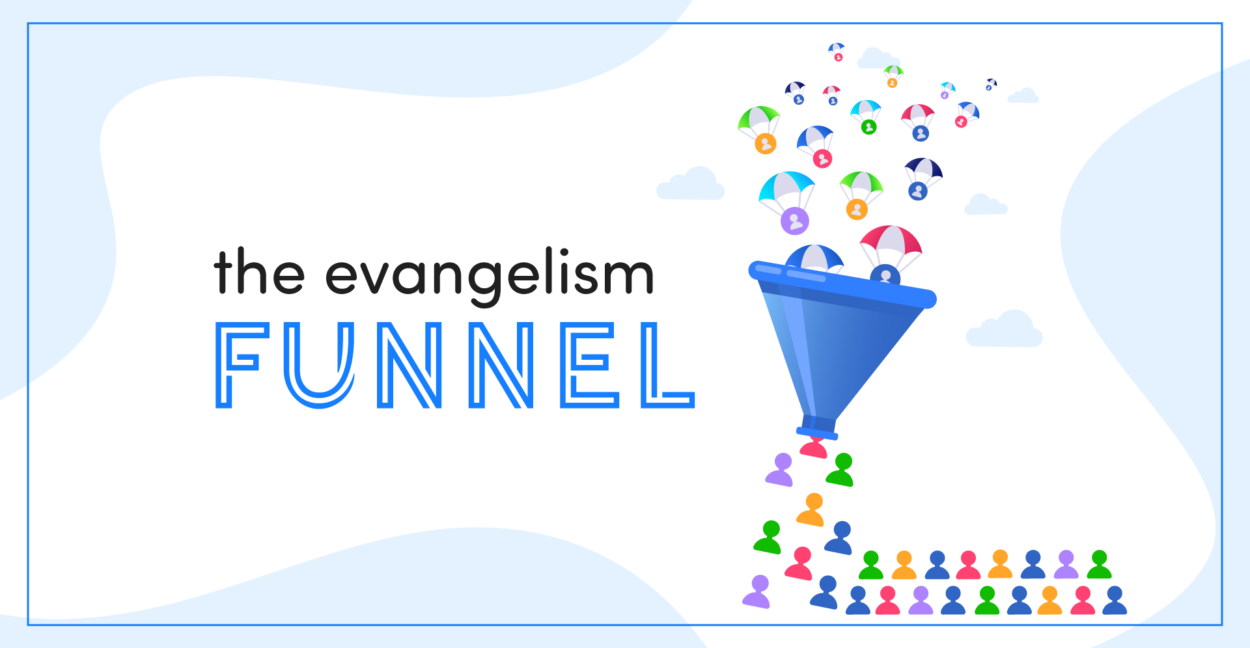As evangelists, our goal is to help people with no connection to our church become baptized members who are fully engaged in the life of the church. In a sense, we are “selling” membership. The cost is not in money, but in time and mental effort. People have to study the Bible to become members; they have to change how they think about certain things. There’s going to be cognitive dissonance—sometimes this will happen quickly, but often this can take time for someone to process.
Membership is a big ask.
What we’re talking about is what the business world calls a “long sales cycle.” Fortunately, there’s a tool that is particularly useful in a long sales cycle, and that’s called the Sales Funnel.
A Sales Funnel breaks down a big, high-friction decision into smaller, low-friction steps. It’s called a funnel because not everyone continues on to the next step, with progressively fewer people in each stage. We already see funnels used in the flow of most reaping meetings as we present truths in a specific order. But the funnel idea is even more important when inviting people to engage with our local church events.
Let’s look at how a funnel works in the business world and how we might apply it to ministry.
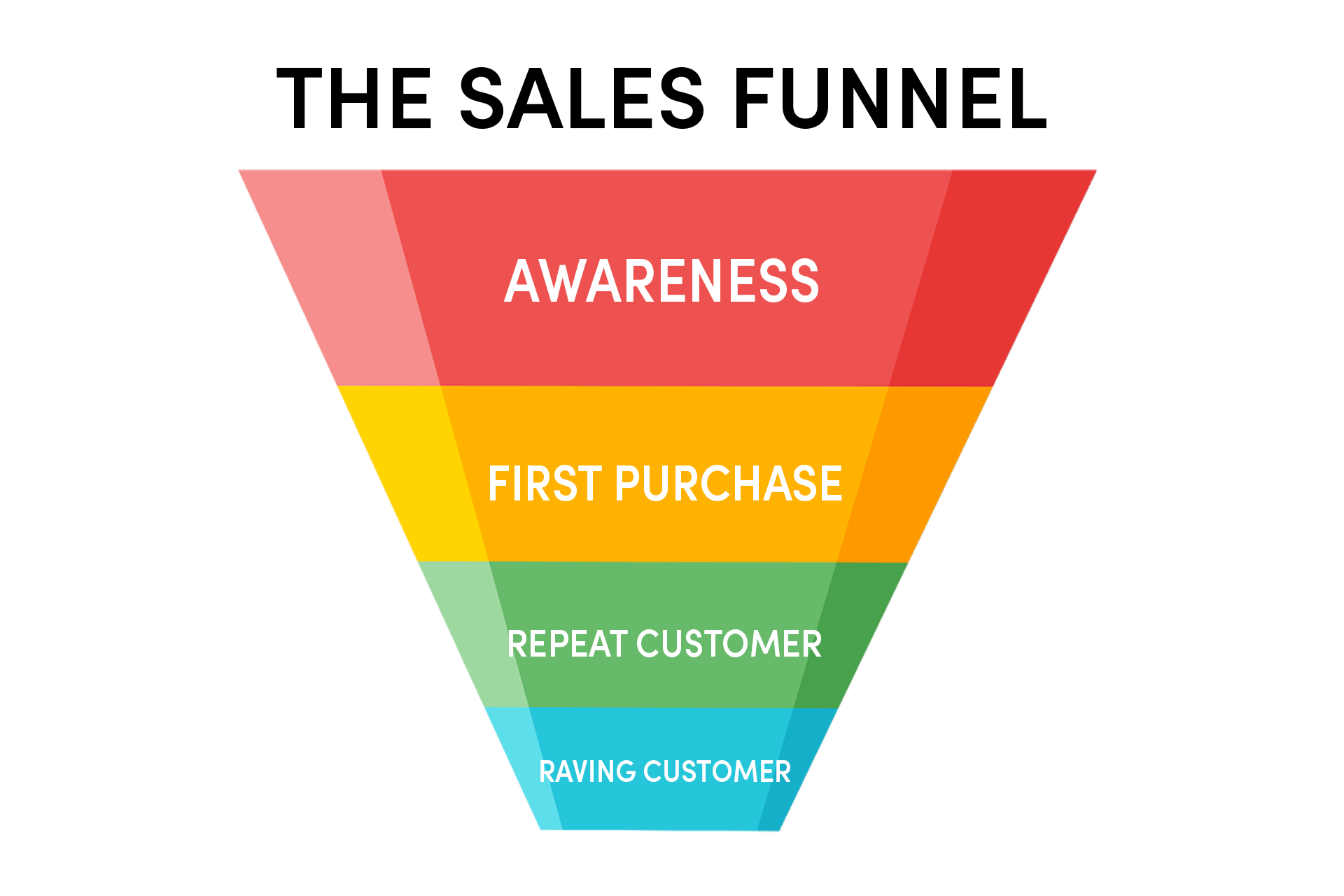
Best Buy's Sales Funnel
Consider Best Buy. They want raving customers—people who buy all their electronics from them and tell others how great they are. But the retailer doesn’t ask random people on the street, “Hey, give us your financial information, spend $3,500 per year, and let us track all your electronics purchases so we can sell you more stuff you don’t need.” That’s a big ask, and people would just laugh and walk away.
Awareness
So instead, Best Buy starts by simply raising awareness of their existence. When I moved a few years ago, I got a mailer from Best Buy offering $50 off any purchase of $250 or more. When I kept that coupon, I was then in their funnel.
First Purchase
As I was settling into the house, I wanted a new TV for the living room, and remembered that coupon. So I went to Best Buy, picked out a TV, and went to check out. In the funnel, I had made it to the first purchase.
But Best Buy doesn’t want me to be a one-time customer. They want me to come back again. So while checking out, they asked if I’d like to join their rewards program, and they offered double points on that purchase. That worked out to a $40 certificate towards a future purchase if I just signed up right then. That sounded good to me, so I gave them my email address and phone number and signed up for their rewards program.
Repeat Customer
Once they had my information, they started sending messages about new products and great deals. They also reminded me about that $40 certificate. One day I saw that the Apple TV device was on sale, so I went down to buy one. With that purchase I became a repeat customer.
Raving Customer
But Best Buy was still not satisfied. While I was checking out, they offered a Best Buy credit card. They said it would give me 6% back in reward certificates, plus they offered an extra 20% of that current purchase. With my certificates and extra discount, my $200 Apple TV only cost $120, so of course I signed up—giving them my financial information to run a credit check in the process.
Then I got an email pointing out that I was only $200 away from becoming an Elite member, which would give me free shipping for online orders and 25% bonus points.
Each time I responded, they offered a little more, and asked a little more. And before I knew it, I had given them all my financial information to get a credit card I didn’t need, I was letting them track all my purchases, and I was buying everything I could at Best Buy to meet the $3,500 spending level to maintain my ElitePlus benefits. I had become a raving customer.
Look what happened. Best Buy broke down their big goal into smaller steps. They took a big ask and broke it into smaller, low-friction decisions. Then they took intentional action to persuade me to make those decisions one by one.
There was always a next step, and they always asked me to take that next step.
The Evangelism Funnel
Adventist evangelism is similar. Remember, we’re selling membership in the church. But you can’t just walk up to a random person and say, “Hey, we’d like you to change the day you attend church, give 10% of your income to us, and give up meat for textured vegetable protein. And oh, by the way, your dead grandma isn’t actually in heaven.” That’s a big ask. So we have to break down our goal into smaller, low-friction decisions.
Adventist evangelists have done that, and the evangelism funnel looks something like this:
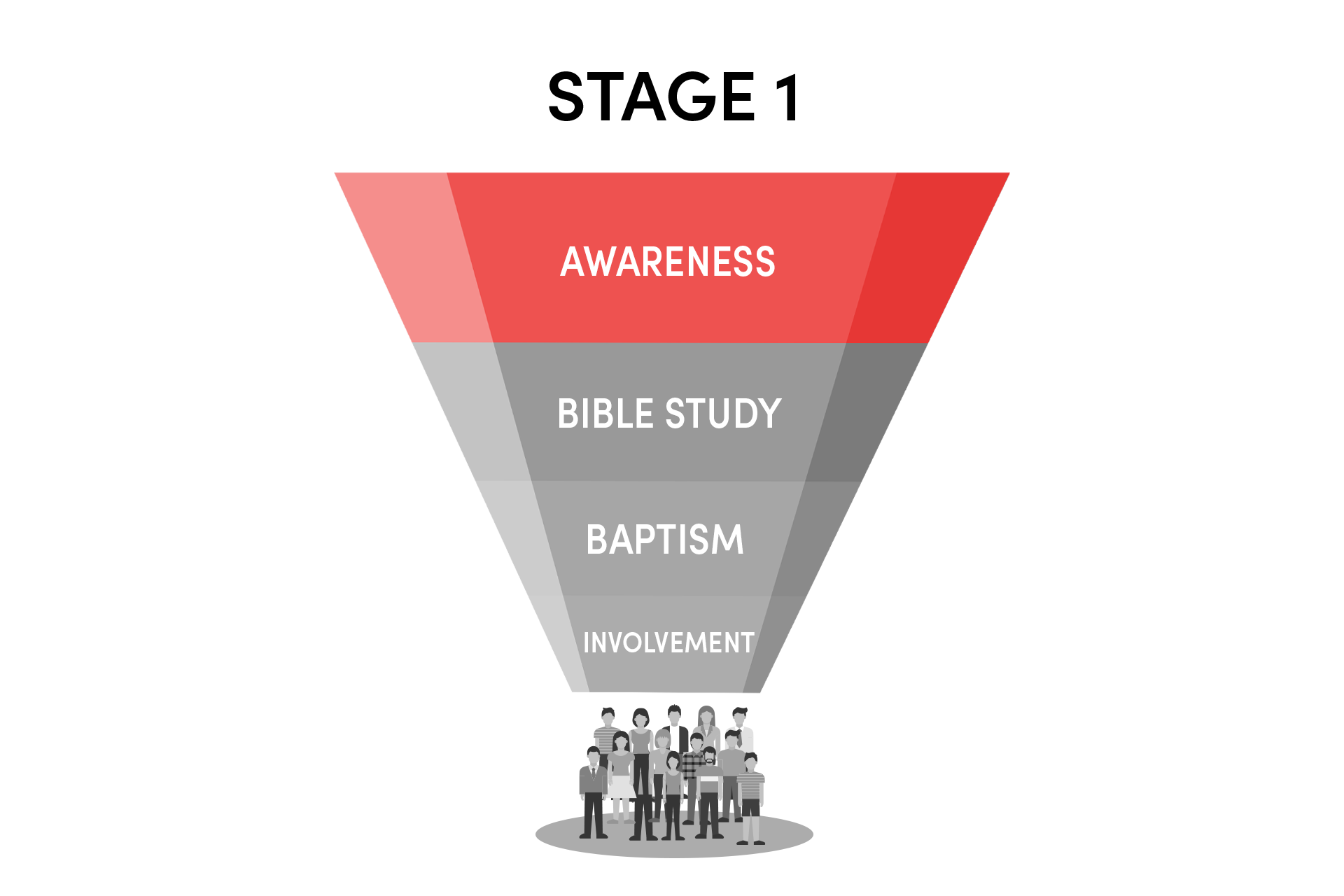
Stage 1: Awareness.
First, there is contact with someone which raises awareness. Maybe people drive by the church and see a sign for an upcoming event. Maybe they get a flyer in the mail. Maybe they see an ad for a Bible study on Facebook. They likely see more than one before they act. But when they respond to your offer, and you know who they are, they are now in the funnel.This first stage is key, and is known as the mouth of the funnel. We want as many people as possible to enter the mouth, and the more, the better. So we need to make this a good fit for the highest variety of people and their interests. For some, it will be attending a full-message prophecy series. But others may come in first through a member inviting them to church, or through a bridge event such as health, marriage, finance or other short series.
You also need to make sure you’re collecting information about each person. If you don’t know who someone is, you can’t encourage them to take the next step. They’re not really in your funnel until you know who they are.
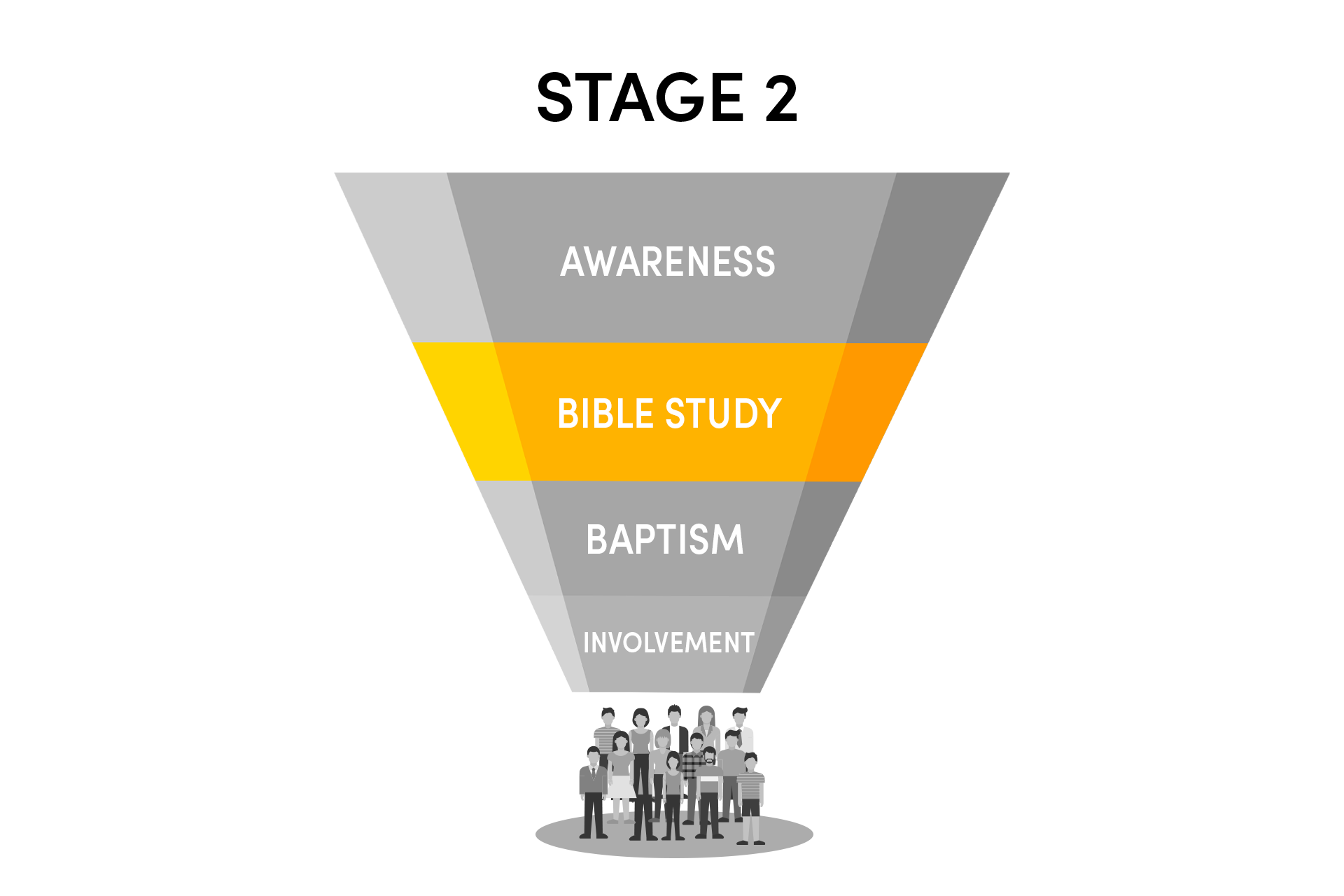
Stage 2: Bible study.
The next major stage is Bible study. You want to see the interest begin studying the Bible with you, so you need to take specific actions to encourage that next step. It could be a personal conversation, or a postcard, or a text (again, probably more than one contact). Once the interest is involved in Bible study, whether one-on-one, in a small group, or in large evangelistic meetings, that interest has made it to the next stage.

Stage 3: Baptism.
Over the course of a Bible study, there are many incremental steps. Adventist Bible studies follow a sequence to help people understand what scripture says about each of the testing truths. In fact, Bible studies themselves are a mini funnel, leading someone step-by-step through Bible truth. The goal of this process is to help someone make a decision to be baptized as a member of the Seventh-day Adventist Church.
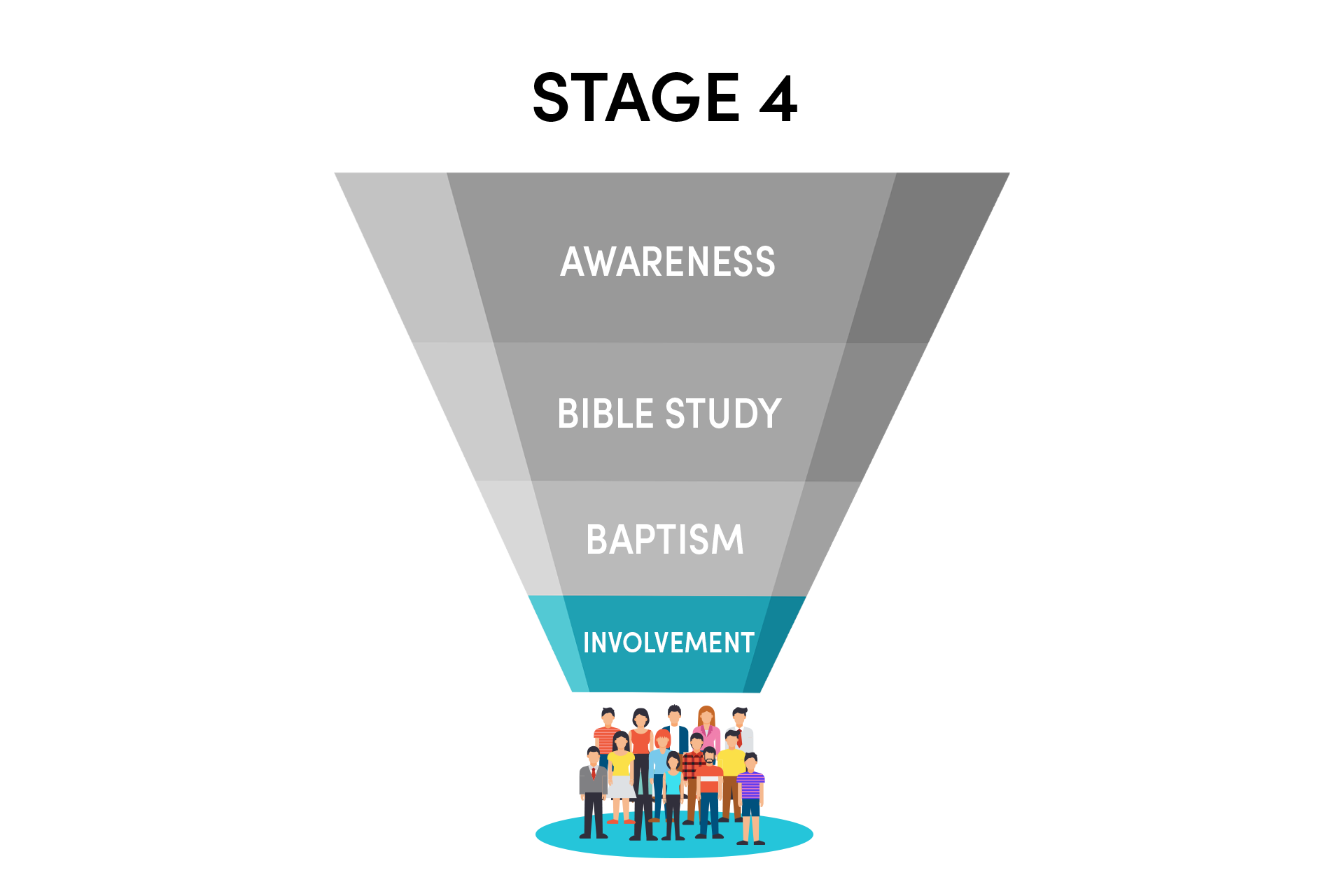
Stage 4: Involvement.
But this isn’t the end. The goal is not membership, but total member involvement. So once someone joins the church, you put them in a pastor’s class, and give them a job to do on Sabbath morning. You also encourage them to share what they’ve learned with friends and family, becoming a light in their world.
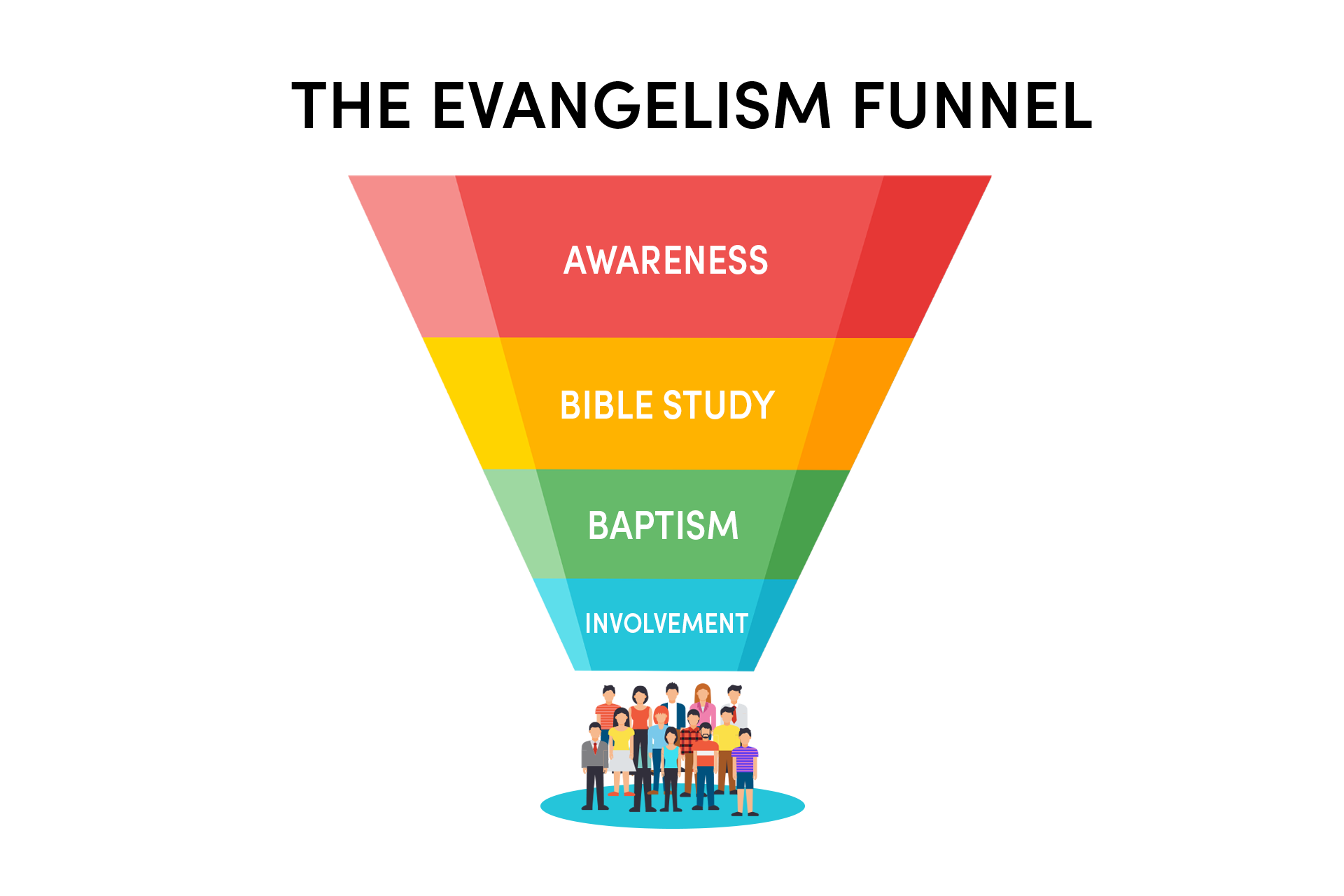
When you go through this process, you’ve broken down a big ask into smaller, lower-friction steps. And before you know it, your friend is worshiping on a different day, is giving 10% of her income to the church, has given up meat for textured vegetable protein, and understands that Grandma is asleep as she waits for the return of Jesus. More than that, your friend is doing her part to spread the Good News herself as a fully-engaged member.
With a Sales Funnel, you break down the big goal into smaller, low-friction offers. There’s always a next step, and you always want to ask people to take that next step in their journey.
So how do we get people into the mouth of the funnel in the first place? How do we find interests? The most effective way to do that is with a marketing campaign, which has three components: the Offer, the Audience, and the Creative. That will be our topic next week.

